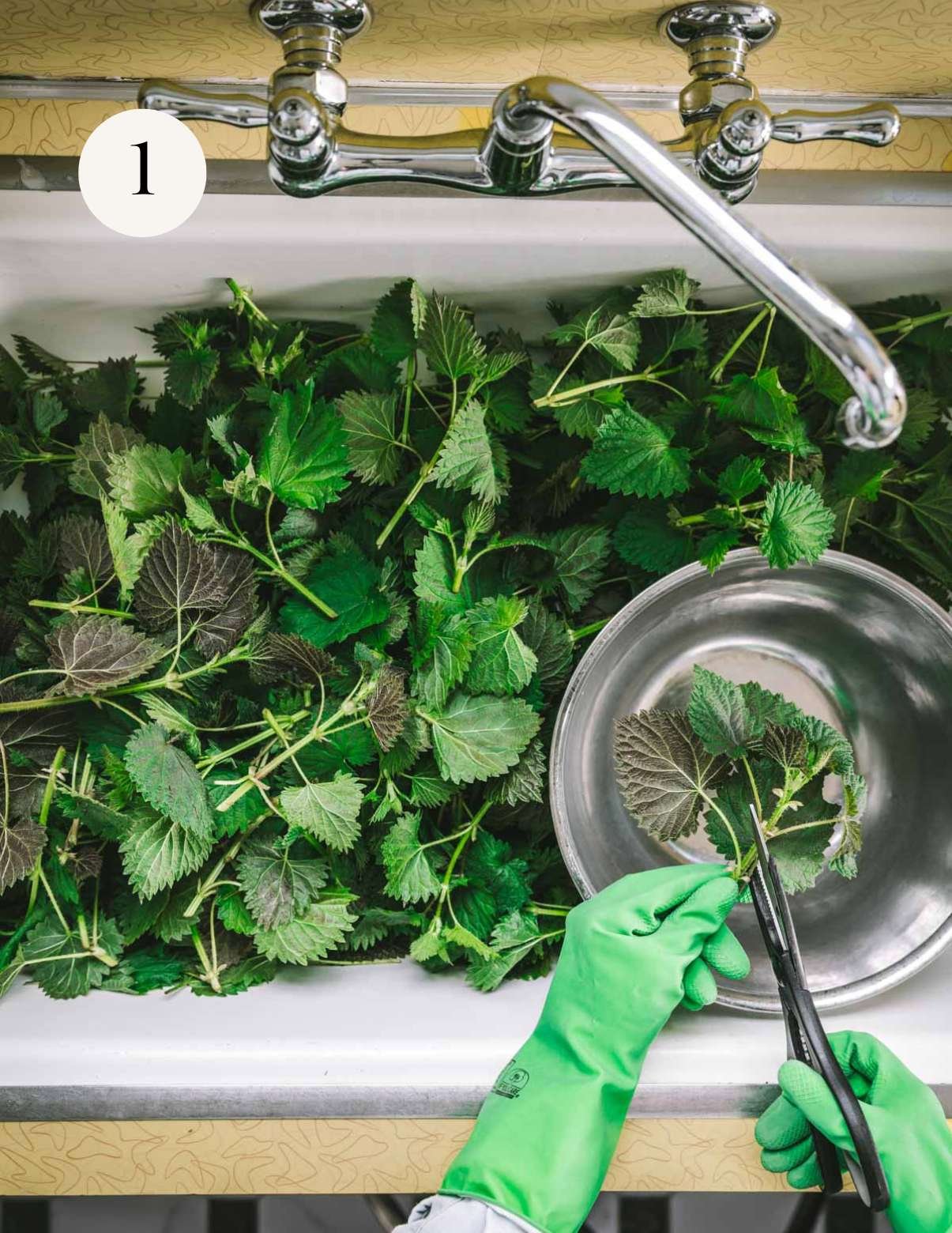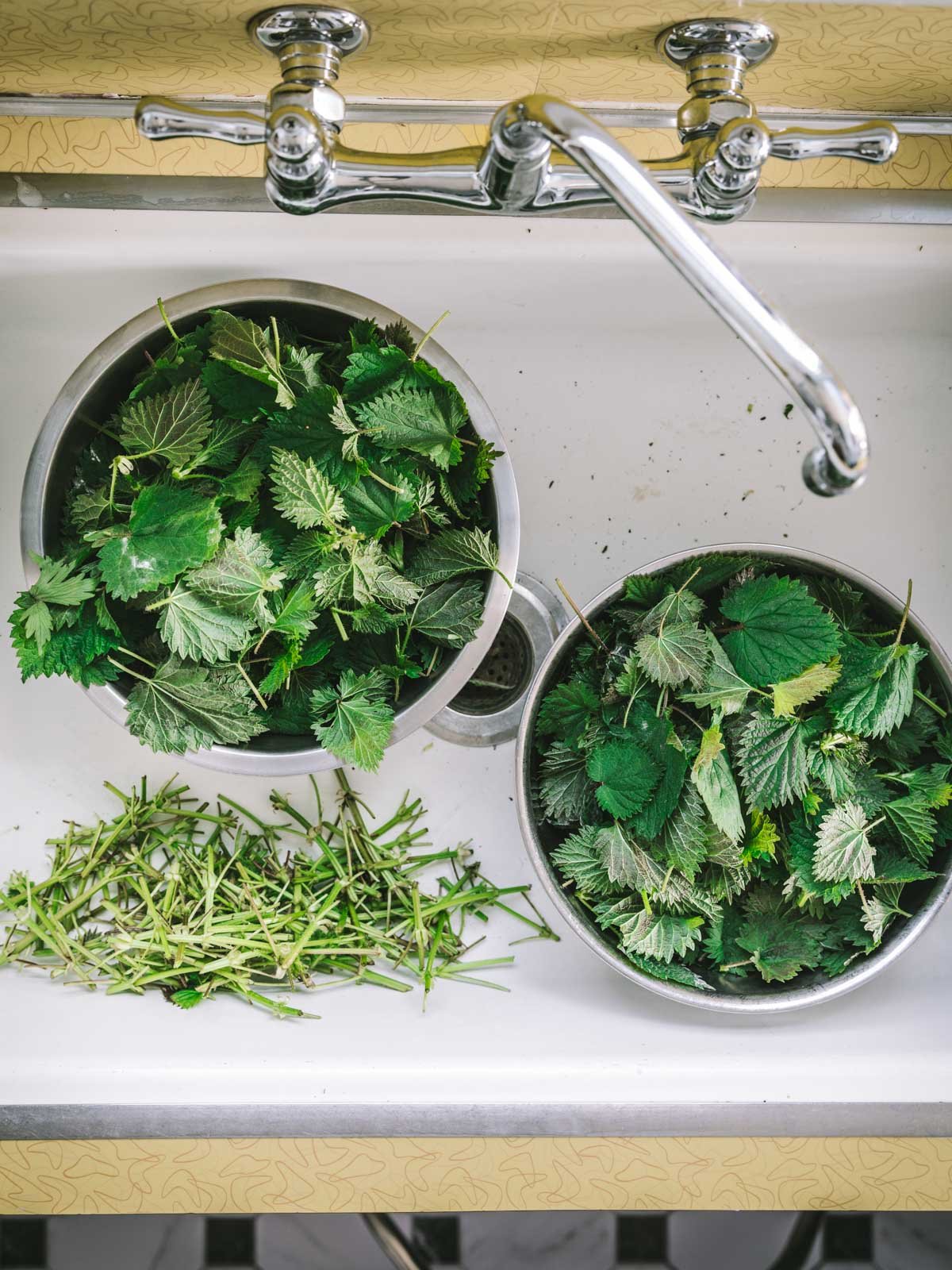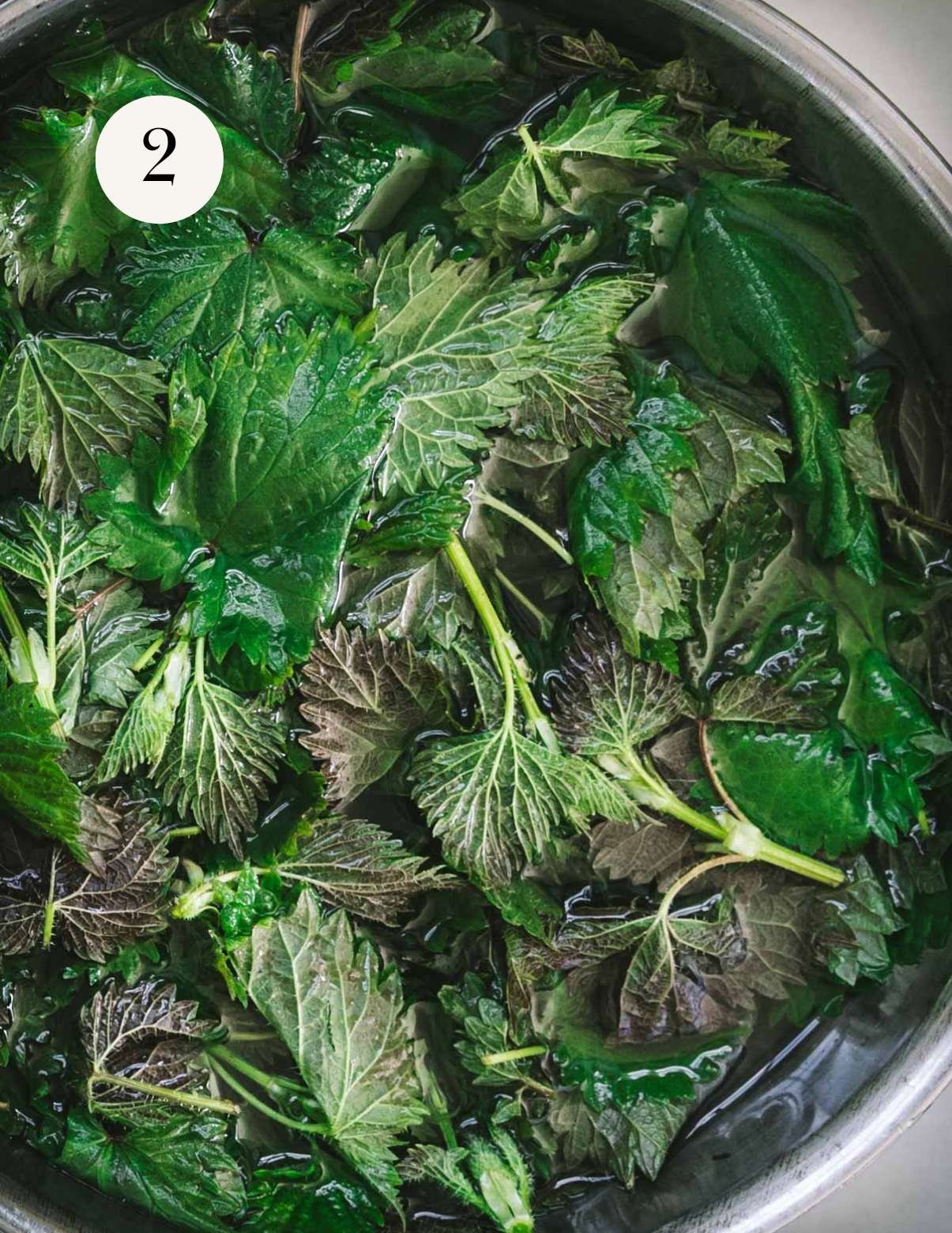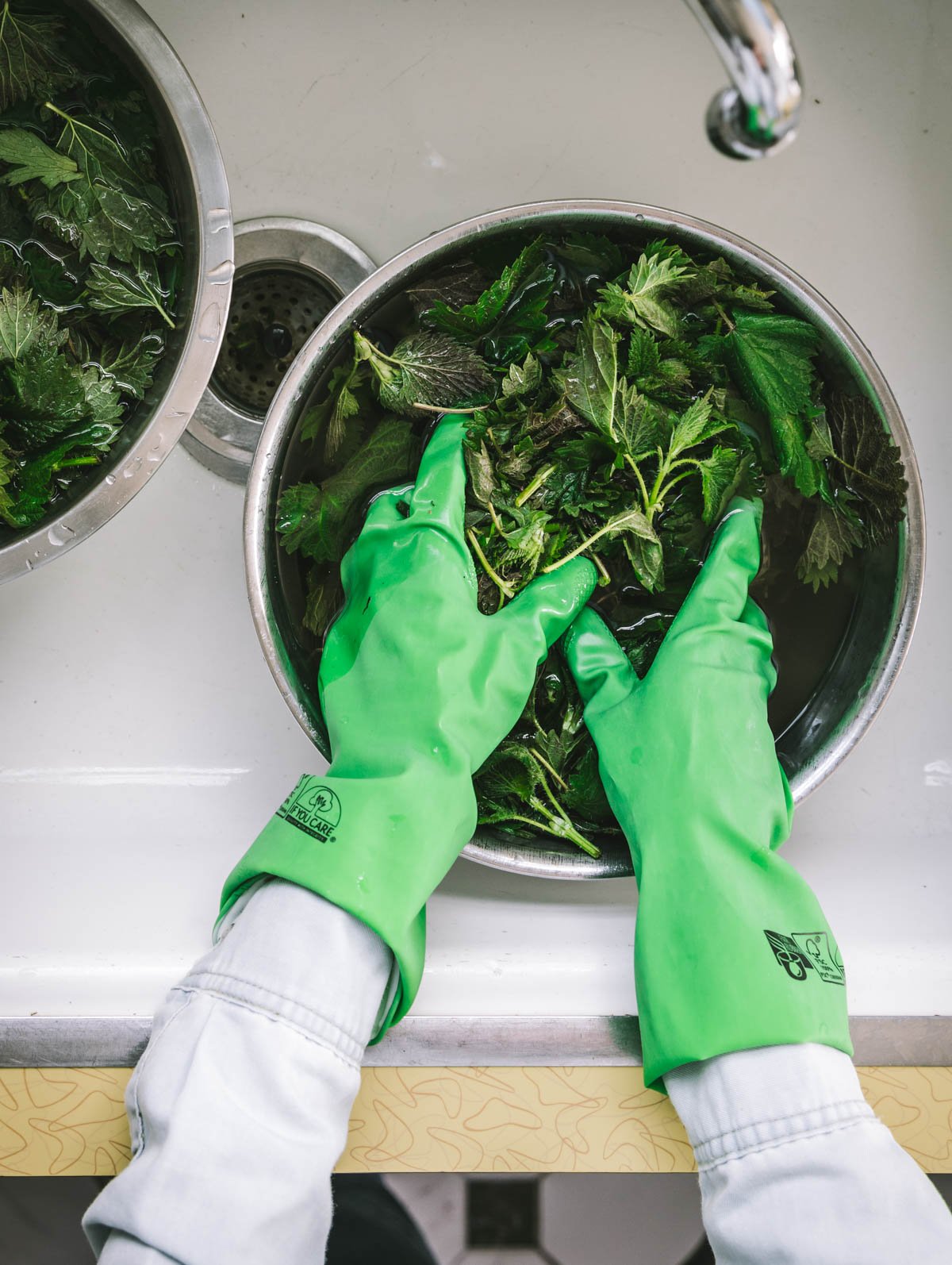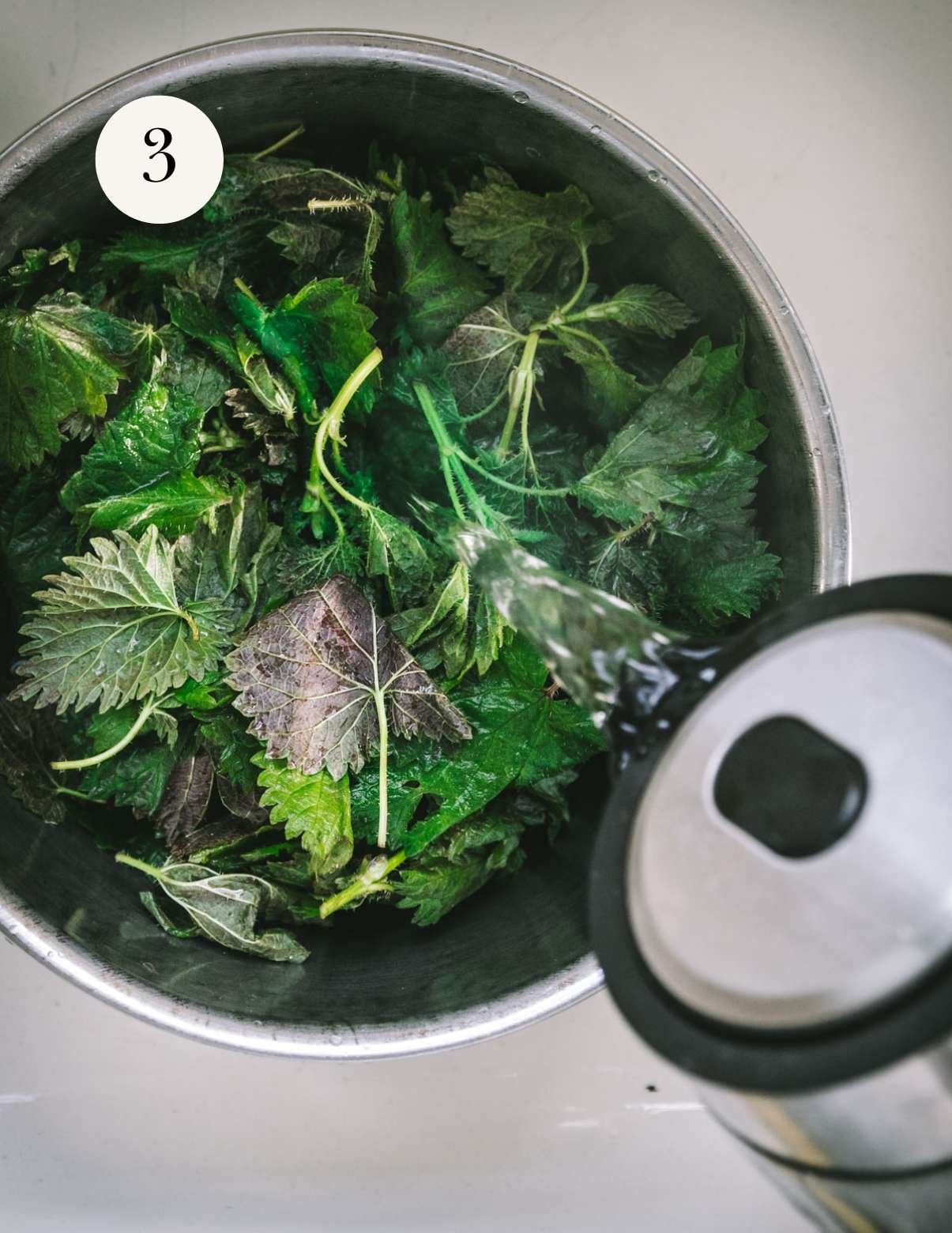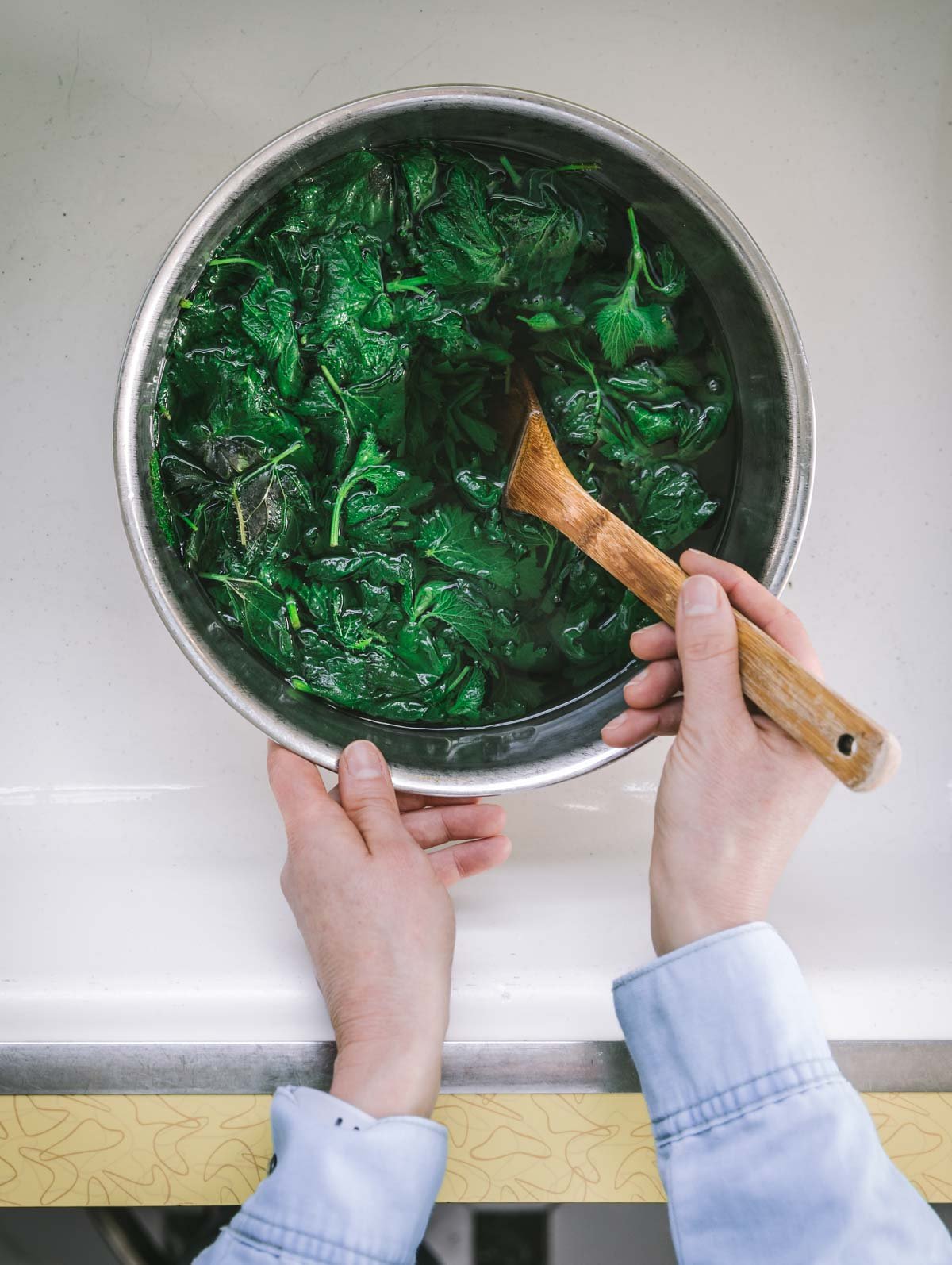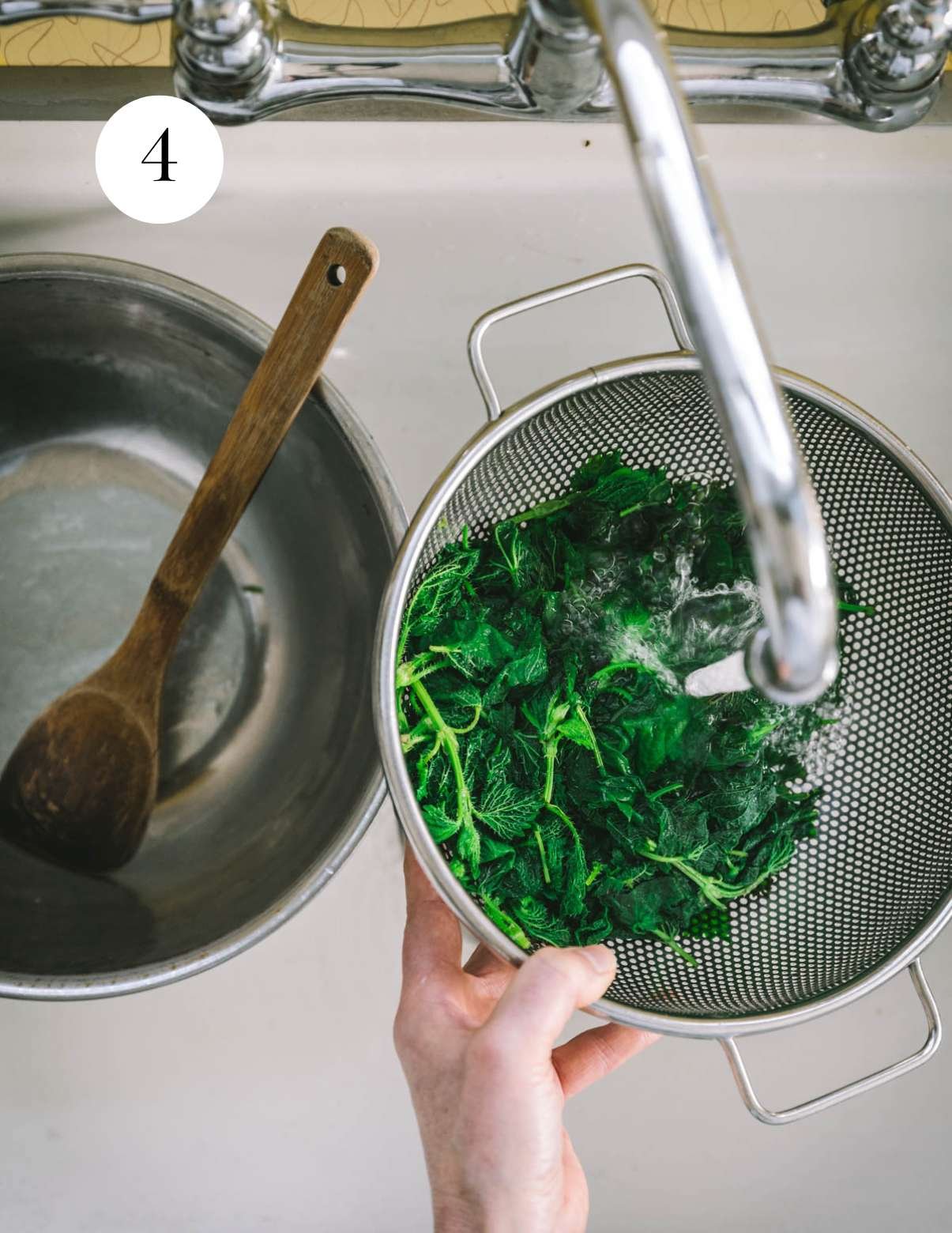How to Cook Stinging Nettles for Eating
Learn how easy it is to forage and cook stinging nettles for eating! This wild edible is a nutritious, delicious food you can use in a host of recipes like stinging nettle pesto and chilled nettle soup.
What are stinging nettles?
As a bona fide nettle nerd, (🌱 it’s my logo after all!) let me proclaim that these edible leafy greens are one of my favorites to cook with! They grow like crazy here in our mild, wet climate. Their scientific name is Urtica dioica, but we’ll just call them delicious. They have a similar flavor profile to spinach with a friendly side of earthy.
Are stinging nettles harmful?
When handled properly, stinging nettles are not harmful. But, speaking from experience, touching the leaves and stalks will cause skin irritation in the form of an itchy and painful rash that looks like white blisters.
The leaves and stems are covered in tiny hairs (trichomes) containing formic acid. When you touch them, they break, releasing the irritant.
Where can I find stinging nettles?
Folks this is free food at its best! If you live in a moist temperate region, they are pretty easy to find since they grow in patches and spread rapidly. Nettles thrive along disturbed pathways where the soil is moist and soft. If you have a favorite walking trail, there’s bound to be nettles growing along it.
How to forage
The first thing is to know what you’re looking for. (see photos below) Nettle leaves are typically long and narrow heart-shaped with serrated edges. They are arranged oppositely along the stem and have a pointed tip. The leaves, stems, and stalks are covered in small fine hairs. When the plant is mature, small yellowish flowers hang in clusters where the leaves meet the stems.
The next thing to know is where they grow. I mentioned they thrive along disturbed pathways. This includes trails and roadsides. They also grow along riverbanks, forests, and meadows. So, pretty much everywhere.
Here’s an early spring patch growing in the moist soil right along a trail.
Once you find a patch it’s time to forage. Make sure you are wearing rubber or tightly woven gloves, long sleeves and pants, and closed-toed shoes. Every time I harvest in a T-shirt I’m sorry.
Have your scissors and a collection basket ready. Begin by snipping the top 6” of the plant. This is all you need! The small cluster of leaves at the top and the first row under that produce the most tender greens. This harvesting method allows the plant to quickly recover. Work your way through the patch, moving to the next one if you need more.
Snip the top 6” of the plant. These leaves are the most tender.
When to harvest
The best time to harvest nettles is early spring through early summer (here on the Peninsula) before the plant begins to flower. Early harvesting ensures the most tender and flavorful leaves. As the young leaves emerge early in chilly spring weather, they often look purple.
That being said, I harvest well into the fall keeping in mind those leaves will be larger and more fibrous. This really isn’t an issue if you are finely chopping or pureeing them.
Where to buy
The best place to buy nettles is at your farmer’s market, usually in the spring. I’ve also seen them at farm stands. A community-supported agriculture program (CSA) is another reliable source. I’m always delighted when they pop up in my share!
I’ve actually never seen nettles at a grocery store. But a natural grocer in a populated area may carry them.
A word of caution: Do NOT eat stinging nettles raw. They will sting your skin and the inside of your mouth. The stingers must be deactivated before eating.
How to prepare for eating (with photos)
You don’t need fancy equipment when preparing nettles. In fact, you probably have these household items already! Here’s how to do it step-by-step.
What you’ll need
Fresh stinging nettles
Gloves- I recommend dishwashing gloves. You can use these for handling, harvesting, and washing.
Scissors- for snipping the leaves and stems.
Large bowl- for washing and blanching the leaves.
Colander- for draining and rinsing.
Cold water- for washing and rinsing.
Boiling water- for deactivating the stingers.
1. Put on a pair of dishwashing gloves to protect your hands. Tumble the nettles into the sink. Use scissors to snip the nettle leaves (tender stems are okay) from the stalk.
2. Gather the leaves into a big mixing bowl. Fill the bowl with cold water and wash them thoroughly to remove dirt and debris. Be extra thorough if you’ve foraged along a roadside. Drain the water from the bowl.
3. Working in batches if needed, pour boiling water over the nettles. A tea kettle is great for this! Make sure all the leaves are covered. Stir them around just to be sure. Let them sit for 1 minute.
4. Next, drain the leaves in a colander. The hot water may be purple or brown. This is totally normal. Then rinse the leaves under cold running water to stop the cooking process and preserve the bright green color. Using an ice bath is really not necessary.
5. Use your hands to squeeze *all* the water from the wilted leaves. It’s safe to handle them now!
How to store
If you can’t blanch them right away, trim the leaves from the stalk (tender stems are okay). Do not wash them. They last longer when stored dry. Then place the leaves in a sealed plastic bag or reusable airtight container. They will keep for up to two weeks!
Once your nettles are blanched and squeezed dry, store them in an airtight container in the fridge for up to a week.
Nettles freeze like a dream. I typically store them frozen, especially after a big foraging sesh when I have more than we can eat fresh. Wrap the green ball in plastic wrap, then again in tin foil, and place in a freezer-friendly bag. They’ll keep for at least 6 months!
FAQ’s
What if I get stung?
If you accidentally come into contact with the needle-like hairs the remedy is similar to most skin irritants. Wash the skin with cold water as soon as possible to remove any remaining nettle hairs and chemicals. Then apply a soothing substance such as:
A paste made from baking soda and water
Aloe vera gel
Calamine lotion
A cold compress applied to the rash can numb the skin and help reduce itching and swelling. Try not to scratch which further irritates the skin. In most cases, it will feel better in a few hours or the next day.
Are stinging nettles healthy?
Yes! This wild edible is considered to be highly nutritious with loads of potential health benefits:
You may be surprised to know that nettles are high in protein. 100 grams of leaves contains 2-3 grams of protein which is pretty notable for a leafy green vegetable.
They are also nutrient-rich, packed with vitamins K, C, and A, plus minerals calcium, iron, magnesium, and potassium. Nettles are anti-inflammatory, antioxidant, and even help you pee, supporting urinary tract health. Woohoo!
Recipes with nettles
Once you discover how easy it is to cook with nettles you’ll find all sorts of yummy ways to enjoy them. Here are some of my favorite recipes:
Go wild and make this Vegan Lemon Nettle Cake.
Stinging nettle pesto is so flavorful as a pasta sauce or dip.
Enjoy chilled stinging nettle soup to kick off patio season.
This vegan nettle pie is based on moorish Greek spanakopita.
Savory nettle pancakes make the best weeknight dinner (brinner).
Foraging for and cooking with nettles, truly never gets old. I find myself eagerly awaiting those first purple green buds poking up through the brown forested floor in late winter. The first harvest feels like a celebration. A way of marking time and appreciating the coming season.
I hope you can share in this joy and make some dang delicious food along the way!
😊 Take care and talk soon,

How to Cook Stinging Nettles for Eating
Ingredients
Instructions
- Put on a pair of dishwashing gloves to protect your hands. Tumble the nettles into the sink. Use scissors to snip the nettle leaves (tender stems are okay) from the stalk.
- Gather the leaves into a big mixing bowl. Fill the bowl with cold water and wash them thoroughly to remove dirt and debris. Be extra thorough if you’ve foraged along a roadside. Drain the water from the bowl.
- Working in batches if needed, pour boiling water over the nettles. A tea kettle is great for this! Make sure all the leaves are covered. Stir them around just to be sure. Let them sit for 1 minute.
- Next, drain the leaves in a colander. The hot water may be purple or brown. This is totally normal. Then rinse the leaves under cold running water to stop the cooking process and preserve the bright green color. Using an ice bath is really not necessary.
- Use your hands to squeeze *all* the water from the wilted leaves. It’s safe to handle them now!
Notes
Scroll up to blog post to see everything you need to know about where to find nettles plus step-by-step instructions with photos!
A word of caution: Do NOT eat stinging nettles raw. They will sting your skin and the inside of your mouth. The stingers must be deactivated before eating.
How to store
If you can’t blanch them right way, gently wash the nettles under cold running water. Shake off the excess and pat them dry. Place them in a plastic bag or airtight container in the fridge for 3-5 days. Some of the leaves may oxidize and turn brown and that’s okay.
Once your nettles are blanched and squeezed dry, store them in an airtight container in the fridge for up to a week.
Nettles freeze like a dream, and this is how I typically store them. Wrap the green ball in plastic wrap, then in tin foil, and place in a freezer-friendly bag. They’ll keep for at least 6 months!
Frequently Asked Questions
What if I get stung?
If you accidentally come into contact with the needle-like hairs the remedy is similar to most skin irritants. Wash the skin with cold water as soon as possible to remove any remaining nettle hairs and chemicals. Then apply a soothing substance such as:
- A paste made from baking soda and water
- Aloe vera gel
- Calamine lotion
A cold compress applied to the rash can numb the skin and help reduce itching and swelling. Try not to scratch which further irritates the skin. In most cases, it will feel better in a few hours or the next day.
Are stinging nettles healthy?
Yes! This wild edible is considered to be highly nutritious with loads of potential health benefits:
You may be surprised to know that nettles are high in protein. 100 grams of leaves contains 2-3 grams of protein which is pretty notable for a leafy green vegetable.
They are also nutrient-rich, packed with vitamins K, C, and A, plus minerals calcium, iron, magnesium, and potassium. Nettles are anti-inflammatory, antioxidant, and even help you pee, supporting urinary tract health. Woohoo!
Nutrition Facts
Calories
190.51Fat (grams)
0.5 gSat. Fat (grams)
0 gCarbs (grams)
33.97 gFiber (grams)
31.3 gNet carbs
2.68 gSugar (grams)
1.13 gProtein (grams)
12.29 gSodium (milligrams)
1.17 mgCholesterol (grams)
0 mgNutritional information is provided as a courtesy and is an estimate only. This information comes from online calculators.





